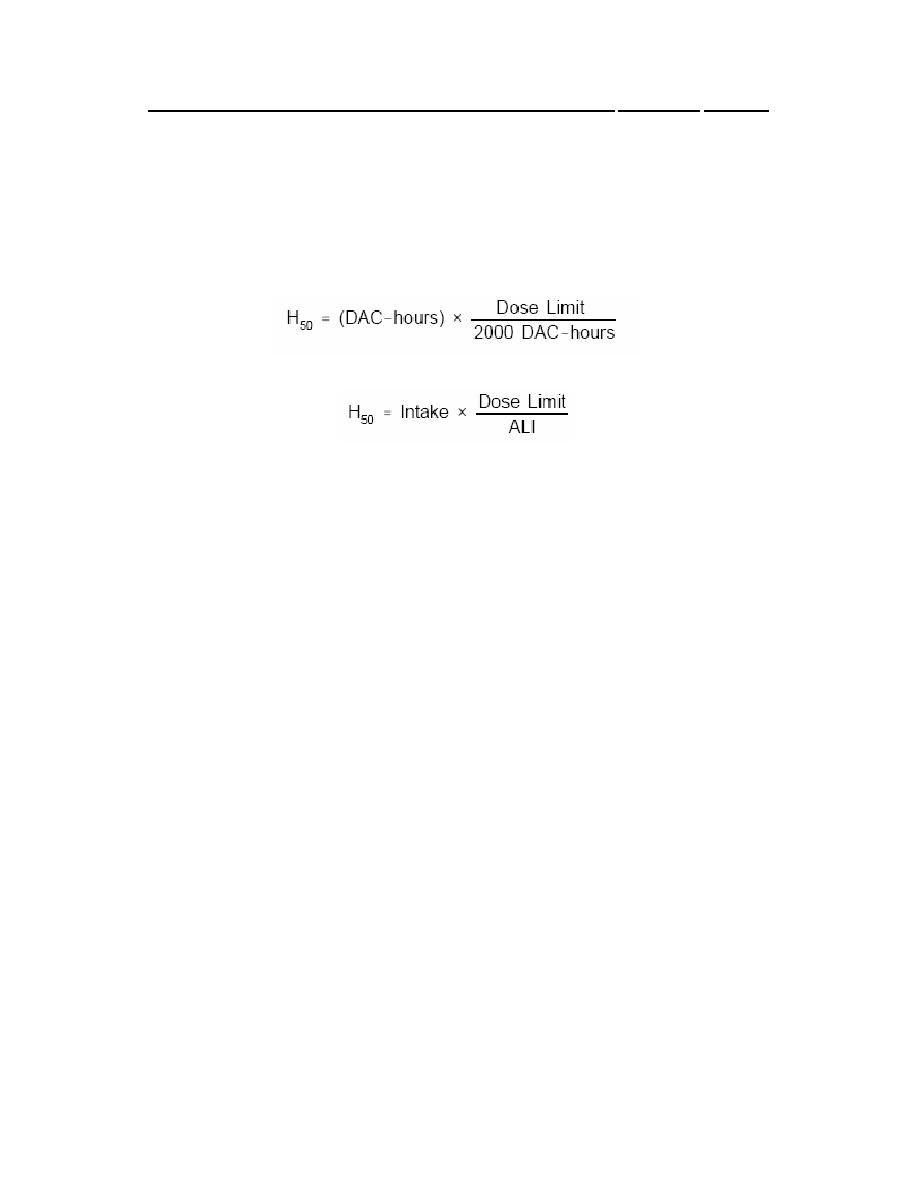 |
|||
|
|
|||
|
|
|||
| ||||||||||
|
|  DOE-STD-1136-2004
Guide of Good Practices for Occupational Radiological Protection in Uranium Facilities
Intake = Air Concentration Breathing Rate Time
(5.6)
If air sample results are HE,50 representative of air breathed by individuals, then doses can be
calculated using the 5-rem stochastic limit for CEDE (HE,50)or the 50-rem nonstochastic limit for
committed tissue dose equivalent (HT,50) and the respective stochastic or nonstochastic DAC or ALI
conversion factor, as shown below:
(5.7)
(5.8)
If respiratory protection is worn by workers, the appropriate respirator protection factor may be
applied to the above calculations (i.e., dividing the calculated result by the protection factor.)
General air sampling programs should be augmented by breathing zone sampling when air
concentrations to which individuals are exposed might be highly variable. Breathing zone sampling may
include both fixed- location and personal (lapel) air samplers. Personal air samples are more likely to be
representative of actual exposure conditions than are samples collected at fixed locations, and they can be
particularly useful for assessing potential intakes involving short-term exposure to well-monitored air
concentrations.
5.8 DOSE ASSESSMENT
Dose assessment involves collecting and analyzing information concerning a potential intake and
developing a conclusion regarding the magnitude of intake and its associated committed dose equivalents.
Dose assessments are conducted by investigating the nature of a potential intake and by analyzing bioassay
measurement results or other pertinent data. Biokinetic models are used in conjunction with bioassay data
to evaluate the intake, uptake, and retention of uranium in the organs and tissues of the body. Intake
estimates can then be used to calculate committed effective and organ dose equivalents. It is essential that
good professional judgement be used in evaluating potential intakes and assessing internal doses. A
number of considerations for dose assessments have been identified (Carbaugh 1994).
Computer codes are commonly used for assessment of intakes, dose calculation, and bioassay or
body content projections. An overview of what should be considered in selecting a computer code, as
well as descriptions of a number of internal dosimetry codes available in 1994, has been developed (La
Bone 1994). Internal dosimetry code users should understand how the code works and be aware of its
limitations. Computer codes merely provide the logical result of the input they are given. Use of a
particular computer code does not necessarily mean a dose estimate is correct.
As used in this section, the definition of "intake" is the total quantity of radioactive material taken
into the body. Not all material taken into the body is retained. For example, in an inhalation intake, the
ICRP Publication 30 respiratory tract model predicts that, for 1-m particles, 63% of the intake will be
5-34
|
|
Privacy Statement - Press Release - Copyright Information. - Contact Us |